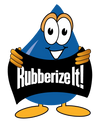Are you a DIY enthusiast with a love for aquatic life? If so, creating a watertight aquarium using Rubberizeit liquid rubber is an exciting project that combines practical skills with the joy of customizing your underwater world. This blog post will guide you through the steps of waterproofing your aquarium using liquid rubber, a method that is both effective and long-lasting.
Why Liquid Rubber?
Liquid rubber is a popular choice for aquarium waterproofing due to its durability, flexibility, and non-toxic properties when cured. It forms a seamless, watertight barrier that can withstand the pressure of the water and the wear and tear of aquarium life.
Materials Needed:
- Liquid rubber coating
- Paintbrush or roller
- Clean cloths
- Sandpaper (fine-grit)
- Protective gloves
- Masking tape
- Aquarium-safe cleaner
Step-by-Step Guide:
-
Empty and Clean the Aquarium: Begin by emptying your aquarium. Clean the interior thoroughly with an aquarium-safe cleaner to remove any algae, dirt, or residues. It’s crucial that the surface is immaculate for the liquid rubber to adhere properly.
-
Sand the Surface: Lightly sand the interior surfaces of the aquarium with fine-grit sandpaper. This creates a slightly rough texture, improving the adhesion of the liquid rubber. Wipe down the surfaces with a damp cloth to remove dust.
-
Mask Off Areas: Use masking tape to cover any areas where you don’t want the liquid rubber applied, such as the top edges, outer sides, or any fittings.
-
Apply the Liquid Rubber: Put on your protective gloves. Stir the liquid rubber thoroughly before application. Using a paintbrush or roller, apply a thin, even coat of liquid rubber to all the interior surfaces of the aquarium. Be sure to cover every nook and cranny for a watertight seal.
-
Let it Cure: Follow the manufacturer's instructions for drying time. Typically, it takes about 24 hours for the first coat to dry. Avoid rushing this process, as proper curing is key to ensuring a waterproof seal.
-
Apply Second Coat: For added durability, apply a second coat of liquid rubber after the first coat has fully dried. This ensures a more robust and long-lasting waterproof barrier.
-
Final Curing: Allow the second coat to dry and cure thoroughly. This could take several days, depending on the product and environmental conditions.
-
Inspect and Test: Once fully cured, inspect the coating for any missed spots or imperfections. Fill the aquarium with a small amount of water and leave it for a day to test for leaks.
-
Set Up Your Aquarium: If the waterproofing is successful and there are no leaks, you can proceed to set up your aquarium as usual.
Safety Tips:
- Always work in a well-ventilated area.
- Wear protective gloves and possibly a mask, especially if you are sensitive to chemical smells.
- Follow all safety instructions provided by the liquid rubber manufacturer.
Waterproofing your aquarium with liquid rubber is a rewarding project that enhances the longevity and safety of your aquatic habitat. With the right preparation and application, you can create a watertight, durable aquarium that will be home to your aquatic pets for years to come. Remember to always follow safety guidelines and manufacturer instructions for the best results. Happy DIY-ing!
This guide is a great starting point for anyone looking to waterproof their aquarium themselves. It’s always recommended to do further research and consult with professionals if you have any doubts or specific requirements for your aquarium setup.

